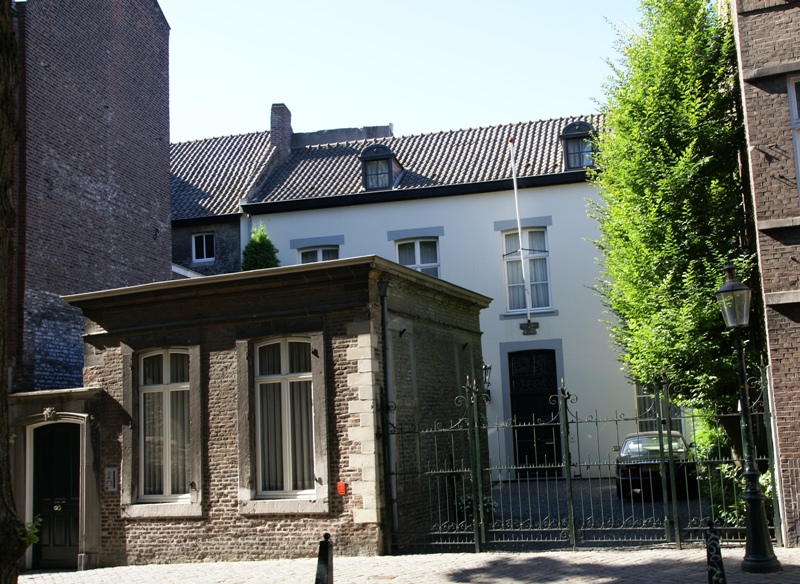| Fig. 11: The claustral belt: the 14 chapter houses were situated in a semi circle around the two churches dedicated to Our Lady and to Saint Nicholas |
The claustral belt of the chapter of Our Lady consisted of a series of houses in a ring around the Church of Our Lady. Not every house on this square was a claustral house. But over the centuries, a series of 14 buildings and annexes became the solid core of the claustral belt. Some of the houses were owned by the chapter, others were the private property of chapter lords, who always sold their property to other chapter lords. Sometimes a chapter lord, or canon, without a house was even forced to buy a chapter house when one became available. The number of houses is too few to allocate a house to each of the 20 canons. Sometimes chapter houses were inhabited by several canons together, sometimes they rented it out to family or friends and lived themselves elsewhere. Most canons and chaplains will have lived in the immediate vicinity of the collegiate church and parish church, making this a quite religious neighborhood.
| Fig. 12: Claustral house nr. 4 inside the red circle on the left hand |
A part of the claustral houses can be designated as staff residences. For example, the 'claustrarius' - the convent guard - had a staff residence, located on the corner of Onze Lieve Vrouweplein and Cortenstraat (claustral house no. 4, which is now gone). The sacristan or ‘subcustos’ (church steward) usually lived in claustral house No. 14, which was built against the church, just next to the old entrance on the south side of the church. This house no longer exists. The rector of the chapter school lived in claustral house no. 12 (OLV-plein 7), just next to the church. Claustral house no. 8 is known as the dean house because the dean of the chapter often lived here, but it was not officially a staff residence. When the French took Maastricht, they abolished the monastic orders and chapters and nationalized their property. Only a few former canons kept their houses. Many houses were then privately occupied or companies were housed in them, such as a printing company in claustral house no. 1 (OLV-plein 23), or a brewery - which was later converted into a bread factory - in claustral house no. 7 (OLV-plein 18).
 |
| Fig. 13: The small mortuary that is part of claustral house nr. 5 |
Some former chapter houses are still privately occupied. Claustral house no. 5 (OLV-plein 20, near the corner with the Koestraat) clearly shows what the old chapter houses looked like in the 17th century: a slightly set back house, a court in the front, often a walled garden and a few annexes. The small, still existing building directly on the street was not a coach house, but a mortuary, where the dead lay in state until they were buried on the cemetery opposite the street.
Reference:
Rensch, van, J., De claustrale huizen van het kapittel van Onze Lieve Vrouw te Maastricht. Een chronologische opstelling van losstaande feiten en gegevens vanaf het einde der 14e eeuw tot de tegenwoordige tijd, Maastricht, 1982, 1983. Bibliotheek RHCL, SHC VAV 071, typoscript.